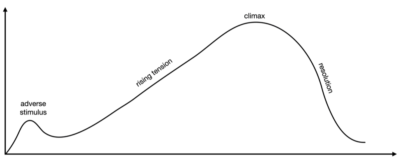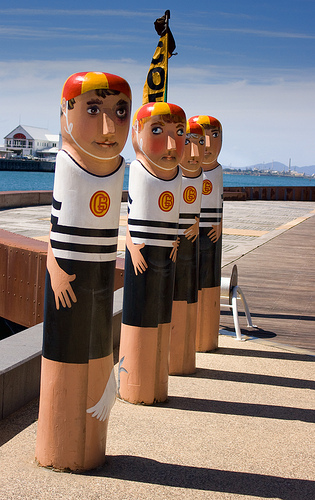8 Elements That Get Readers Invested in Your Story
Today’s guest post is by Stefan Emunds.
Readers don’t just invest money but also time and effort. They suspend their disbelief and invest trust—meaning, they give you, the writer, the benefit of the doubt that you will deliver on your story promise.
They invest intellectually by figuring out clues and blinds, twists and turns, and they foresee climaxes. Last but not least, they invest emotionally by rooting for story characters and weathering conflicts and tension.
Reader investment is your goal. Reader investment means success.
You want to get total strangers to read the first chapter of your book and hook them enough to read the second. And the third. And the fourth. And so on. Reader investment means reader engagement.
These are the chief engagers:
- Empathy
- Curiosity
- Tension
- Inspiration and motivation
- Sense of wonder and beauty
- Emotional thrill
- Excitement
- Satisfaction
- Feelings
Let’s take a look at each of these engagers.
Empathy
Empathy is the most important engager. If readers don’t root for the protagonist, they won’t be curious about what will happen to her; neither will they get tense when the going gets tough. For that reason most writers establish empathy as fast as possible.
Curiosity
Andrew Stanton says: “ Make the audience put things together. Don’t give them four, give them two plus two.”
People are curious souls. They wonder how it feels to walk in someone else’s moccasins for a moon. Or in someone else’s high heels for a month. Is the grass really greener on the other side? How does it feel to have no garden? How does it feel to have an entire park as a garden?
People read to experience interesting situations they can’t or don’t want to encounter in real life.
Curiosity manifests in two ways:
- Expectation or anticipation (positive curiosity)
- Worry (negative curiosity)
William Archer notes: “Drama is anticipation mingled with uncertainty.”
Curiosity is not an emotion. It’s an intellectual right-brain affair. You can maintain your readers’ curiosity by raising questions—in particular, the global story question: Will the protagonist succeed or not?
But don’t just raise any question, questions need to come with challenges.
Raise and answer multiple questions on multiple levels—for example: a story question, an act question, a chapter question, and a scene question. Try to keep two to three questions open at any given time.
You might raise two questions in your opening and answer one. In the next chapter, raise two new questions and answer one. In the third chapter, raise two new questions and answer two. And so on.
 Many action screenplays have seven or eight sequences, and each sequence begins with a challenge/question and ends with an answer: success or failure. You can do the same thing with chapters and acts.
Many action screenplays have seven or eight sequences, and each sequence begins with a challenge/question and ends with an answer: success or failure. You can do the same thing with chapters and acts.
Also, you can boost reader curiosity with dramatic devices, such as a cliffhanger. A cliffhanger separates a question and answer with a chapter, act, or even book break.
Tension
Tension arises from the discrepancy between want and reality. In order to feel tension, readers must empathize and/or sympathize with characters.
Tension manifests in two ways:
- Hope/anticipation: The reader wants something to happen, for example, that the protagonist succeeds.
- Worry: The reader wants something not to happen, for example, that the protagonist fails.
“In other words, your reader must care what happens. Otherwise, he won’t worry, and worry is the big product that a writer sells.” – Dwight V. Swain
While curiosity is binary, tension arcs:
Adversity stands between the protagonist and her success, hence adversity catalyzes tension.
Empathy + Adversity = Tension
The antagonist keeps the protagonist from realizing the story goal. The greater the power divide between the protagonist and antagonist, the greater the tension:
- Small power divide: readers wonder whether the protagonist will succeed.
- Large power divide: readers wonder how on earth the protagonist can possibly succeed.
- Optimal power divide and writer jackpot: readers are convinced that it is impossible for the protagonist to succeed.
You can use dramatic devices to increase tension by these techniques:
- Adding various types of adversity—conflict, for example
- Complicating complications
- Raising stakes
- Dropping unexpected twists
- Introducing deadlines
- Hinting at hidden agendas
Tension and Curiosity
I’m sure you heard this already: stories are either story-driven or character-driven. Best if they are both.
Oversimplified, character-driven means empathy and tension and story-driven means curiosity. We design curiosity with story structure and create empathy/tension with characterization and narrative (POV).
On a side note, curiosity induces people to buy your book; tension and curiosity keep them reading.
Inspiration and Motivation
All great stories shed lights on inspiring ideas, morals, or what-ifs. Example: What if an astronaut is stranded on Mars?
A protagonist who succeeds against all odds can inspire and motivate readers to follow her example in real life.
Sense of Wonder and Beauty
You can produce a sense of wonder and beauty with descriptions of characters and your story world. Twp classic examples of the latter are Harry Potter and The Lord of the Rings. Ugly worlds can produce a sense of wonder and (dark) beauty too—for example, dystopian worlds and Nordic Noir.
Here is a wonderful character description from Hard Time by Charles Dickens:
He was a rich man, banker, merchant, manufacturer, and whatnot. A big, loud man, with a stare, and a metallic laugh. A man made out of coarse material, which seemed to have been stretched to make so much of him. A man who was always proclaiming, through that brassy speaking-trumpet of a voice of his, his old ignorance and his old poverty. A man who was the bully of humility.
Emotional Thrill
We humans are a crazy bunch because we like to flirt with negative emotions like fear—by going bungee jumping or riding roller coasters.
We engage with stories because they allow us to enjoy emotional thrill without the dangers that come with it in real life.
You can engage readers with emotional thrill through action beats and antagonistic dialogue.
Excitement
Stories are virtual adventures. What is more exciting than following a heroine on her heroic journey?
Satisfaction
We experience satisfaction when we succeed in endeavors and avert danger. The story resolution delivers poetic justice, and that conjures a sense of satisfaction in readers.
Feelings
Feelings and emotions are two different affairs. Thrill, excitement, satisfaction, anger, disgust, and infatuation are emotions. Love, happiness, a sense of beauty and purpose are feelings.
Feelings (aka aesthetic emotions) are somewhat elusive because, unlike emotions, experiences don’t trigger them. Feelings need to be cultivated for art or in a relationship.
How often do we express unconditional love in real life? Happiness? Beauty? Purpose? Stories are great opportunities to reveal, explore, and communicate feelings.
Feelings and Emotions
Emotions sell. That’s why romance, action, horror, and thriller are the leading genres. But modern readers have become more demanding and desire deeper stories, stories with existential depths that conjure feelings and touch the heart.
Conflict
It is true, there can never be enough conflict in a story, but conflict is a subcategory of adversity and hence a catalyst, not an engager in its own right.
Conflict catalyzes curiosity and tension. Conflicts keep the protagonist from realizing her story goal, which engages readers with tension. Also, conflicts give rise to the question whether the protagonist will prevail, which engages readers with curiosity.
Use Engagers in a Balanced Way
How many engagers should a writer use at any given time in her story? I’d say empathy should always be present. The rest is a matter of balance.
Too few engagers will make for boredom; too many engagers will stress out your readers.
Comparing a story with a cake, you would make empathy your cake’s base layer, then add tension and curiosity to build its body, with emotional thrill for creams and fillings. Then ice the whole thing with inspiration, sprinkle a splendor of wonder and beauty and excitement, light some feely candles, and place an all-resolving cherry on top. Or a lemon.
Stefan Emunds was born in Germany and is the author of The Eight Crafts of Writing—a map for creative writing. He also offers an email workshop on enlightenment, which you can learn about here. Connect with Stefan on LinkedIn and Facebook.













Excellent post on what makes a story engaging, interesting, what brings a story to life for the reader. The “engagers” Stephan talks about serve to keep readers captive from beginning to end.
Thank you for the kind comment, Florence! 🙂
Wonderful points here. Thank you so much for this concise and explicit post. All bet to you. Keep cool!
You’re welcome, Victoria, and all the best!